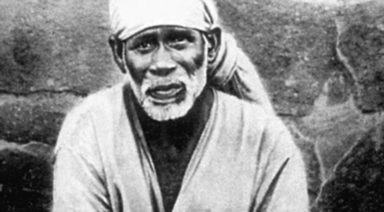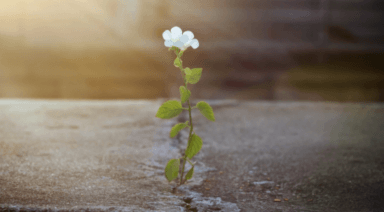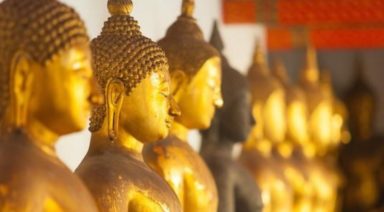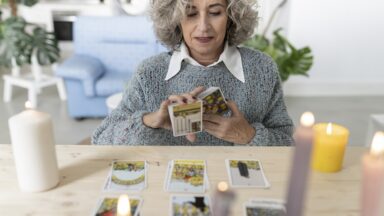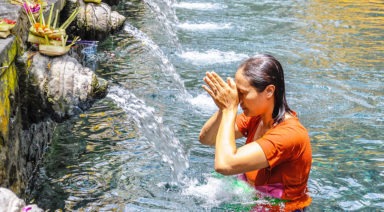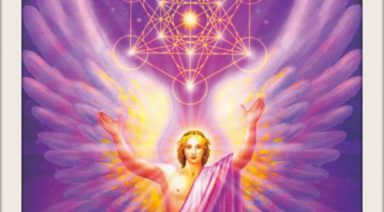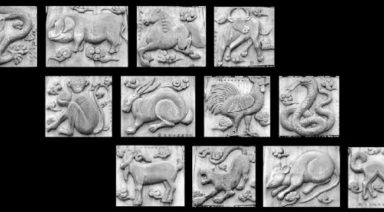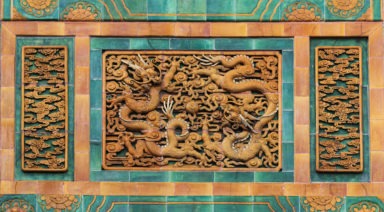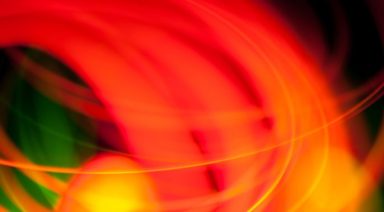Qigong: Centuries Old Wisdom for Modern Times

Modern life is busy and stressful. The speed in which we live can be exhausting and the catalyst for a host of ailments. In our chronically overscheduled lives, learning to cultivate a sense of balance can be difficult. However, there is an ancient solution to this very modern problem: Qigong, a centuries-old method viewed as a way to find peace, balance, mindfulness and a way to tap into one’s life energy.
Originating in China, qigong is actively practiced around the globe by people of all ages; from those seeking increased flexibility, health, spirituality, improved posture, and ease of movement. What is qigong and how has this “life energy” form of exercise become such a popular form of self-care?
Qigong can best be described as a gentle form of martial arts that unites breathing, movement, and meditation. According to the National Qigong Association, qigong is not one form. It literally has hundreds of styles and applications, traditions, practices, and lineages. What is agreed upon is that, at its center, qigong is a philosophy based on two essential aspects: qi, the subtle breath or vital energy; and gong, a skill cultivated through steady practice working to stimulate our Meridian system.
Qigong: Where Mind Body and Spirit Come Together
Whether called qigong, chi kung, or chi gung, the ancient form dates back more than 4,000 years with evidence that the earliest version can be linked to shamanic practices that evolved into Taoist belief. This iteration eventually became associated with the Yellow Emperor and the Huangdi Neijing, or Yellow Emperor’s Classic of Medicine, the influential reference book for Chinese medicine.
Despite the many benefits qigong provides, those benefits remained hidden in China until the West was allowed entry after a visit by President Nixon in 1972. Initially adopted by those within the New Age movement, qigong masters began to introduce the form to new audiences, eventually reaching the 1993 PBS series “Healing and the Mind” with Bill Moyers, which allowed millions of viewers to learn about the modality, increasing interest and practitioners.
Qigong Exercises: Healing From Within
The balance at the center of qigong is based on the theory of yin/yang. The yin is focused on breathing, relaxation, visualization, and stretching and can be beneficial for mindfulness training, stress reduction, and spiritual development. The yang is more aerobic and dynamic, geared toward building one’s immunity, and for treating more serious conditions such as cancer. The exercises move through 12 primary channels and eight extra channels which provide support, strength, and harmony on a holistic basis, from mind to body, to spirit.
The most basic qigong form is known as Baduanjin, often called the “Eight Pieces of Brocade.” These highly descriptive movements include: Pressing the Heavens with Two Hands; Drawing the Bowstring and Letting the Arrows Fly; Separating Heaven and Earth; Wise Owl Gazes Backward; Punching With Angry Gaze; Bouncing on the Toes; Big Bear Turns From Side to Side; Touching the Toes then Bending Backwards.
Another popular style is “Spring Forest Qigong,” taught by Chunyi Lin, Grand Qigong Master. Founded by Lin in 1994 and reported to be one of the leading training and healing centers, the modernized take on an ancient form that claims to be a “simpler, effective system of movements and meditations that can be done anywhere, anytime, and by anyone.”
Common to all styles and derivations of qigong are three intentional corrections:
- Posture: It is believed that the health of the spine is critical to releasing blocked energy, higher and more sustained endurance, stronger immune systems, and fewer injuries.
- Breathing: Qigong uses abdominal breathing which oxygenates our cells, as well as relaxes our nervous system, and cleanses toxins from our systems.
- Mental Awareness: Qigong’s gentle movements, focus on abdominal breathing, and supported posture help to foster a heightened mental awareness or mindfulness.
The reported result of the three intentional corrections is what practitioners describe as a sense of “cheerful indifference,” or relaxed alertness.
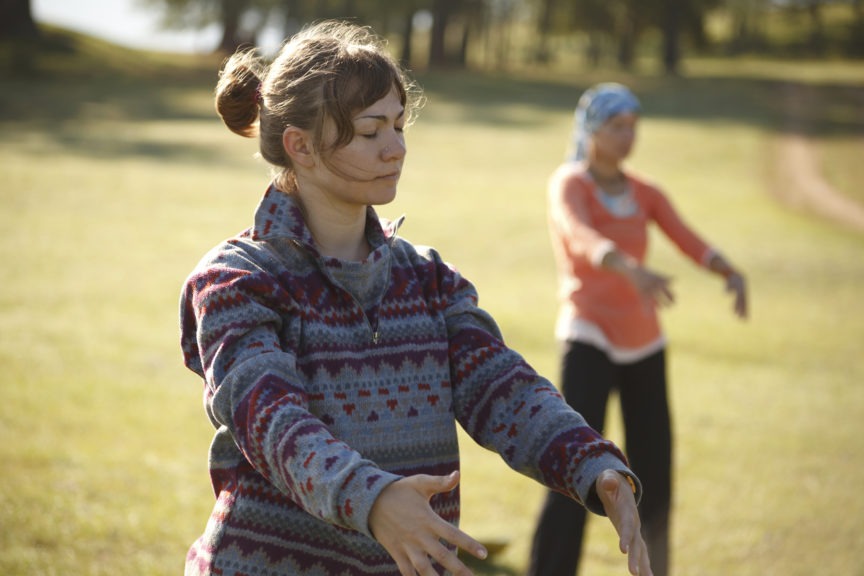
Qigong vs Tai Chi; What’s the Difference?
Qigong is often confused with a not so distant cousin, Tai Chi. So, how does Tai Chi differ from qigong? Both rely on slow, gentle movements, with qi energy at the core, as well as the goal of healing and well-being. However, the power one gains from Tai Chi is often thought of as being dense, while qigong emanates a sense of lightness. Tai Chi relies on a defined choreography, or “form;” while qigong can be broken up in parts and practiced more freely.
Tai Chi can also take longer to learn because of the intricate and specific moves; qigong movements can be learned quickly with relative ease, with the focus being on stillness and meditation. Tai Chi is often referred to as a “moving meditation,” while, as we will discover, qigong’s meditative practice relies on a sense of stillness.
Qigong Benefits: Medical, Meditation, and Mind
The health and medical benefits of qigong are well-known and well-documented. Health professionals, from cardiologists to psychiatrists, have studied how qigong can lower stress, boost the immune system, increase mobility, and counter anxiety as well as depression. Harvard Medical School has touted the many benefits of qigong including increased cognitive function, balance, concentration, and memory recall. The University of Minnesota’s Earl Bakken Center for Spirituality and Healing dedicates an entire section of their website to the many benefits that the different kinds of qigong offer us.
Qigong is appropriate for all fitness levels and can complement an existing exercise routine. The system relies on one’s own body, with no machinery required; the cost, once the exercises are learned, is minimal, and can be done indoors or outside. Beyond the physical movements associated with qigong, there are a number of other aspects to the practice that one can benefit from:
- Qigong Meditation: Practiced sitting, standing still, or lying down, qigong meditation involves visualization, sending the qi energy to a specific part of the body for healing purposes, and focusing on abdominal breathing patterns. In qigong meditation, the sense of ease and relaxation is the focus of the meditative practice, not simply an after effect of it.
- Qigong Massage: Since it is believed that qigong taps into our nervous system’s ability to learn how to calm itself, many qigong practitioners are supplementing the movement and breathing segments of the form with hands-on massage, both from a licensed massage therapist or with self-massage. One population in particular which benefits from qigong massage also referred to as Qigong Sensory Training, are children on the autism spectrum. Studies have shown improved “function of sensory and physiological systems in the body” of autistic children who were exposed to QST over a five-month period. Self-massage can help with vision issues, migraines, and even those annoying “floaters.”
- Qigong Martial Arts: Many martial artists from a variety of traditions incorporate qigong into their practice as a way of increasing their “qi” energy through a series of dynamic and focused tensing and releasing of the muscles, combined with deep abdominal breathing. The results of adding qigong to an existing martial arts regimen are strengthened muscles and ligaments, while also increasing the overall Meridian and internal organ systems.
How to Get Started on the Path of Qigong Wellness
The path to wellness can be lined with many good intentions; the foundation to successfully learning qigong starts with a qualified teacher, either in a class setting, on a private basis, or online. As with any new form of exercise, learning to begin is key. You can conduct a simple online search, allowing you to try qigong in the comfort and privacy of your own home. Another low-cost entry point option is a community recreation center, which regularly offers affordable beginning qigong classes. Or if you learn through reading, there are many books on the aspects of this ancient tradition.
If you crave a more in-depth approach, you can study with a qigong master teacher or at a healing center. As qigong is focused on energy, it is important to look for the following when exploring qigong with a qualified instructor and program:
- What level of mastery does the teacher have?
- What is the teacher’s or center’s lineage?
- Do you connect with the teacher’s energy?
The National Qigong Association is an excellent resource tool to find qualified and certified teachers at various levels of mastery. While there are no national standards for qigong teachers, NQA provides support, training, and information for teacher members, training centers, and practitioners.
Qigong is an easily learned and accessible approach to wellness and tapping into your body and mind’s innate wisdom. This path toward wellness can begin with one step or one breath. Whether you sign up for a class, read a book, or dive more deeply into qigong, you will begin to unlock for yourself, and your life, the multitude benefits of this ancient tradition offers to our modern world.
Sai Baba of Shirdi: Creator, Sustainer, and Destroyer of Universes
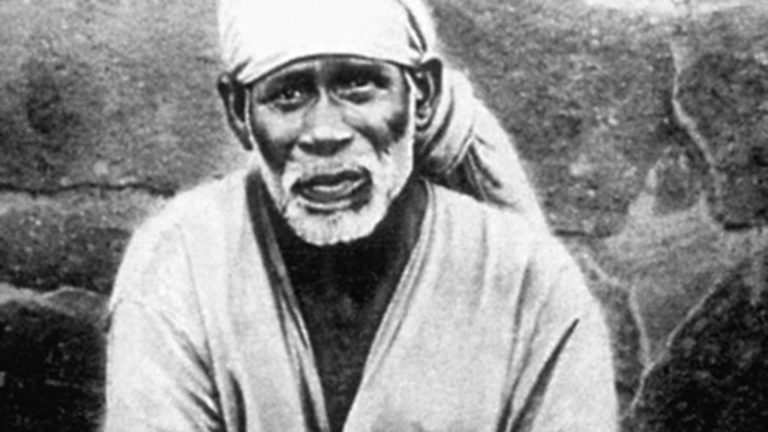
Revered by thousands of Hindu, Muslim, Christian, and Zoroastrian devotees, Shirdi Sai Baba was known to be an Indian saint, Satguru, fakir (vowed to poverty and devoted to God), and spiritual master.
The translation of Sai Baba’s name speaks directly to how people saw him. Sai means “Sufi Saint” and Baba means “Father.”
Baba did not support the hierarchical caste system or the notion that one religion was more significant than another. Throughout his life, he gently wove elements of Christianity, Hinduism, and Islam into his unique version of Vedantic teachings.
While Sai Baba’s birth year was not recorded, it is assumed he was born near the year 1838. He passed from this life in samadhi in 1918. Baba often lived in a Mosque, and his physical body was cremated in a temple.
Many believe Sai Baba of Shirdi to be the embodiment of Saguna Brahma, which refers to an eternal, absolute and immanent divine presence. Many also believe Sai Baba is the embodiment of the supreme God and Sri Dattatreya, one of the consecrated avatar-lords of Yoga in Hinduism.
Baba was most likely born to Brahmin parents within a few hundred miles of Shirdi, Maharashtra, India. Some have reported that he came from the village of Pathri. When he arrived in Shirdi, at the age of 16, where he led an ascetic life, Baba began meditating under a neem tree and teaching local villagers.
Baba left Shirdi for some time and was thought to have traveled throughout the country meeting with other saints, fakirs, and gurus.
“Do not be misled by what you see around you, or be influenced by what you see. You live in a world which is a playground of illusion, full of false paths, false values, and false ideals. But you are not part of that world.”
— Shirdi Sai Baba



